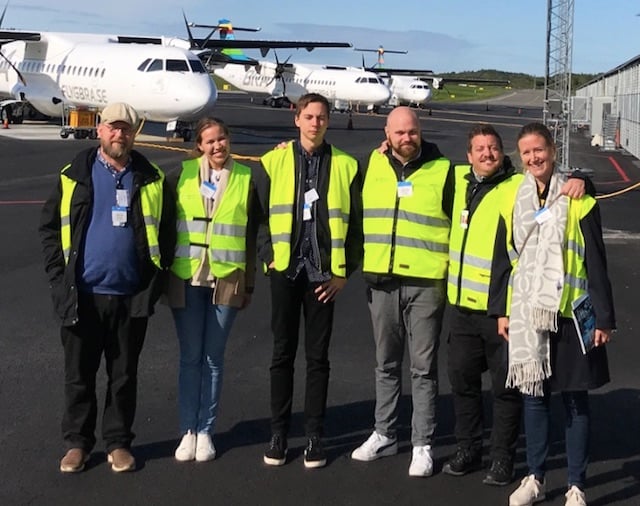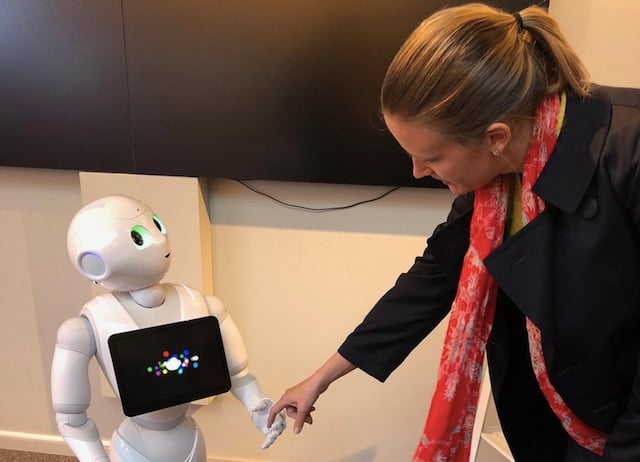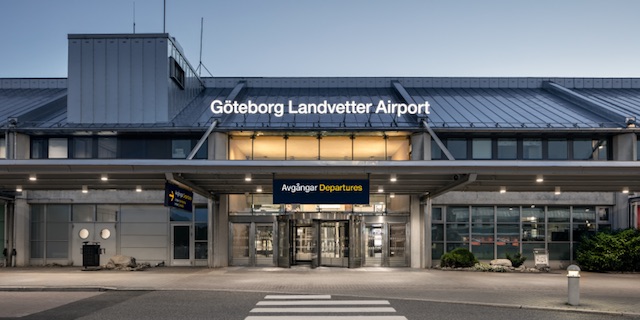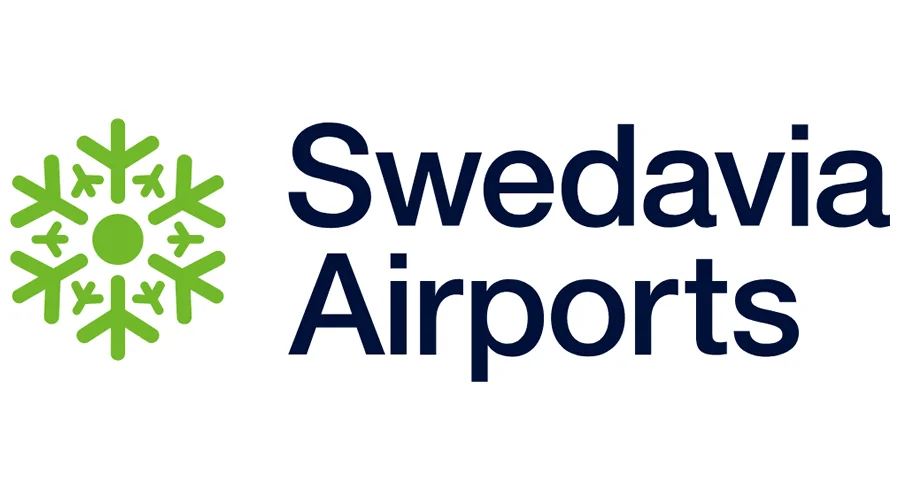Something in the air: How Sweden’s airports became ideas factories
Air travel is on the rise with 8.2 billion people predicted to travel by plane in 2037. That’s double the number of air travellers in 2018 and means that - in just 18 short years - airports around the world will need to seamlessly handle over 8 billion people a year.

In the midst of a climate crisis, airports must prioritize accommodating for this growth in a sustainable way. It will require cutting-edge ideas - and lots of them - which is why Swedavia, Sweden’s largest airport operator, brought in Karin Gylin as its inaugural Head of Innovation.
“We have four sustainability goals and innovation should work towards all four of them to create value for the customer but also economically, socially and environmentally,” Karin tells The Local.
Since assuming the mantle in 2018, Karin has been implementing an ideas management process as well as heading up a talented, interdisciplinary team dedicated to fine tuning and developing ideas. As one of Swedavia’s four core values - which also include being reliable, engaged and welcoming - innovation is embedded into the ethos of the organisation. Ideas don’t just come from the few, says Karin, they should be part of the daily work of every employee. Consequently, she subscribes to a ‘more heads are better than one’ philosophy and encourages every member of staff at Swedavia to share ideas with her and her team.
 Photo: Karin Gylin (far right) and the innovation team
Photo: Karin Gylin (far right) and the innovation team
“We want the entire company to be working on innovation, whether they are in operations or passenger experience. If we don’t work with innovation as something that concerns everyone and supports everyone’s creativity, then we’re not aligned with our core values."
It’s turned Swedavia into something of an ideas factory with inspiration coming at Karin from all angles. To kindle this spirit of innovation, Karin plans workshops with the different teams to support them with early stage idea generation. As a further incentive, an annual ‘Innovator of the Year’ award is given out to highlight the great ideas that have come out of the company.
“One of the challenges is getting innovation to become part of everyone’s daily work, so that they think innovation or possibilities in everything they do,” says Karin. “It takes change management to get everyone to see that they can contribute and be innovative.”
When she’s not working on an idea pitched by a fellow employee, Karin is swapping tips and trends with other airports or participating in conferences around the world. She believes that collaboration and knowledge-sharing is key to staying ahead of the curve - and for providing passengers with the most seamless and stress-free travel experience.
“It’s really a global world. For example, biometrics, which is your digital ID, like if your face or iris or fingerprint is used to identify you, is something that’s being implemented and discussed in a lot of airports. It’s something we need to collaborate on because different solutions would end up being too complex for the passengers in each airport.”
 Karin Gylin (right). Photo: Swedavia
Karin Gylin (right). Photo: Swedavia
‘An outside-in perspective’
While everyone at Swedavia is encouraged to present ideas to Karin, there’s one person whose sole job it is to source inspiration from Sweden and beyond. Lars Haukeland is tasked with keeping Swedavia at the forefront of not just the aviation industry - but of all industries relevant to the airport operator, such as the retail and food industries. He’s responsible for the company’s business environment outlook and, together with his cross-functional team, continuously monitors and tracks global trends.
“It’s fun but it also means I have a sort of outside-in perspective,” says Lars. “I know a lot about what’s going on in other airports or adjacent industries but I don’t work hands-on with implementing projects in Swedavia. That’s where I collaborate with Karin, I give her ideas for innovation that I think could work well for us.”
READ ALSO: Sweden's airports tackle climate change from the ground up
Lars and his team use a custom-built cloud service to keep their finger on the pulse of global trends. An influx of inspiration is delivered direct to their inboxes every morning and it’s their task to sift through it and identify what’s worth pursuing.
“Each day, we get around 100 different things in our inbox. It’s a pick of things from the open internet and from different sources where we have subscriptions. Whatever the team thinks is important, they will publish in the portal we have. Then each month we go through and select the things we want to report on.”
The need for inspiration is never ending and Lars makes sure that no trend passes Swedavia by. Three times a year, he pulls together a business environment report as well as sending out regular newsletters to various departments, including Karin’s. He also plans a couple of workshops a year to review the latest material and update the trend analysis in response to weakening and growing trends.
 Solar panels have been in use at Gothenburg-Landvetter airport for several years. Photo: Swedavia
Solar panels have been in use at Gothenburg-Landvetter airport for several years. Photo: Swedavia
Like everyone at Swedavia, Lars knows that sustainability must come first and foremost. He regularly reinforces to Karin and the rest of the management team the need for Swedavia to invest in areas like clean energy and energy efficiency. It’s essential to sustainable growth as well as supporting the company’s goal to become carbon neutral at all of its ten airports by the end of 2020.
“One thing I stress a lot in my presentations that I want to look at is clean energy and energy efficiency,” says Lars. “That area is a clear trend. I see more and more airports starting to produce their own electricity by solar panels. I give examples of what’s going on at other airports and give ideas of what we should do.”
Solar panels have been in use for several years at Landvetter Airport in Gothenburg and Swedavia’s energy department is looking into the possibility of installing them at Stockholm Arlanda. Lars has also been promoting the advantages of the sharing economy, suggesting that Swedavia could have some form of car sharing scheme in place to cut back on emissions from vehicles.
Karin takes many of Lars’ suggestions onboard and is currently working on a proof of concept to use data Swedavia has from waiting times in combination with other data sources to improve the indoor climate at the airport and reduce energy consumption. It’s an ongoing test and she hopes to see results by the end of the year that will determine whether or not the idea is viable.
“Energy efficiency has a great impact on sustainability. So we are trying to look into several areas to see how we can use the data we have to be more clever with, for example, how we use our ventilation systems,” she explains.
From solar panels to ventilation systems, innovation is quite literally in the air at Swedavia. However, it’s more than just a tool to ensure the company continues to grow and thrive. It’s also an effective way to engage all employees and keep them feeling loyal and motivated.
“Innovation and idea management plays an important role in employee engagement,” says Karin. “Taking care of the creativity within the company allows us to build a greater engagement and commitment from employees.”
This article was produced by The Local Creative Studio and sponsored by Swedavia.
This content was paid for by an advertiser and produced by The Local's Creative Studio.

Join the conversation in our comments section below. Share your own views and experience and if you have a question or suggestion for our journalists then email us at [email protected].
Please keep comments civil, constructive and on topic – and make sure to read our terms of use before getting involved.
Please log in here to leave a comment.